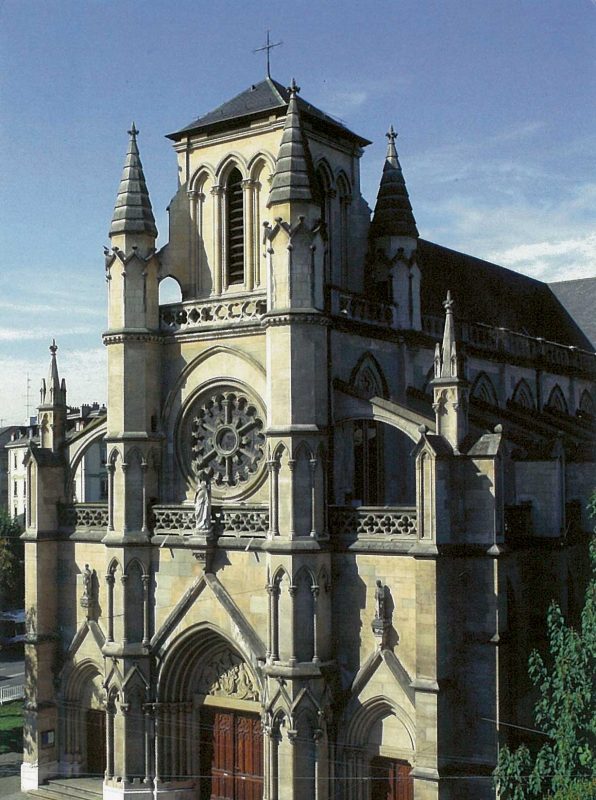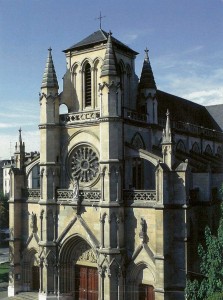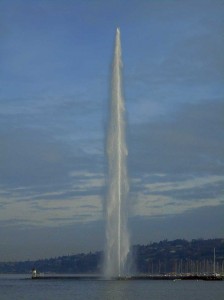by MICHAEL OTTO
People visit Geneva in Switzerland for many reasons.
They might be international visitors on a diplomatic mission to the United Nations Office in the Palais des Nations.
Or they might simply be tourists who come in search of fine chocolate, expensive clocks or maybe just the stunning beauty of Lake Geneva and its outlet, the mighty Rhone River.
But I had a more personal reason for wanting to visit.
In 1989, 25 years ago, my father Donald died while on a business visit to Geneva.
He actually passed away in a hotel in a French village — Ferney Voltaire — in the Pays de Voltaire, just across the border from Switzerland.
None of my family had ever been able to visit the place where he died, so I counted myself fortunate in being able to go there during a European holiday late last year.
But Anne, my mother, who died two years ago, once said that several hours before Dad died, she visited what she called the Catholic cathedral in Geneva and lit a candle for him and our family there.
So during my short stay in Geneva, I was keen to visit this Catholic cathedral in the heart of
Reformation country.
Had I done sufficient research before I left New Zealand, I would have discovered that the diocese
of Lausanne, Geneva and Fribourg is actually seated at Fribourg.
But with the blissful ignorance of the naive traveller, I set out on crisp, cold, but fine, Geneva morning to find St Peter’s Cathedral.
With a name like that, it is surely Catholic, I thought.
I set off across the Pont du Mont-Blanc, viewing the beautiful Jet D’Eau fountain in all its glory out in the lake, to my left.
Climbing up the steepish incline to the old city, I made a few turns, and came to the cathedral.
A group of fresh-faced school children, pens and books in hand, were waiting to go in, with their young woman teacher trying to corral them into order.
I walked by and noticed a sign pointing to the Musee International de la Reforme — the International
Museum of the Reformation — nearby.
Not surprising, I thought, in John Calvin’s Geneva. It is good that Catholic and Protestant can co-exist side-by-side in these ecumenical times, I mused.
So I went into St Peter’s Cathedral and immediately noticed two things.
There was only a very small communion table in the chancel, and most of the stained glass windows
flanking the church just showed patterns; no pictures of saints or anything. (The beautiful windows at the back of the chancel,restored in the 19th century, were an exception). Something fishy here, I thought.
I spied a desk near the entrance, picked up a pamphlet in English and made a discovery.
Since 1536, the cathedral had been the main place of worship of Geneva’s reformed Protestant church.
Indeed, it was the adopted home of John Calvin and, even today, still displays his chair, near the
pulpit, presumably from which he preached.
Unfortunately, in 1535, religious strife had led to the destruction of the cathedral’s altars, statues and many of its paintings. But the pulpit and some paintings at the tops of the pillars were preserved, hinting at the building’s extensive Catholic history.
Archaeological inquiry has shown that from the eighth to the tenth centuries, there were three churches on the site, with one said to date back to the fourth century.
These eventually merged into one, with the current Romanesque and Gothic structure built between
1150 and 1230AD.
Today, from the outside, the cathedral’s most famous features are its two towers, which the public
can access for a few Swiss francs.
If one climbs to the top of the towers, a splendid view of Geneva is available.
And in the south-west corner of the cathedral is the beautiful Chapel of the Maccabees, built between 1400 and 1405AD. It features stunning stained glass windows; a feature of its restoration in the 19th century.
The chapel was originally made for Jean de Brogny, a cardinal under Pope Clement VII, to house the
cardinal’s tomb and that of members of his family.
During the Reformation, the chapel was subdivided into floors, converted into a salt store, and
then used by the Academy from 1670.
All very interesting and uplifting, I thought, but even though St Peter’s is a European heritage listed site, surely it can’t be the church in which my mother prayed?
An inspection of maps in a nearby cafe revealed that there is a Basilica of Notre Dame of Geneva near
the main railway station.
So I set out back over the Pont du Mont-Blanc and eventually found this church.
If the main protestant structure had been austere and “penny plain”, then this basilica was definitely
“tuppence coloured”.
Built in the 1850s from the same type of sandstone as many buildings in the Geneva, the basilica features stunning stained glass windows created by different artists, from 1857 to 1875.
The windows around the upper part of the nave were inspired by the “Hail Mary” (south side), and by prophesies concerning the Virgin Mary (north side).
The stained glass around the apse (1912) is the work of the avant-garde artist Alexandre Cingria and was inspired by biblical texts on the coming of the Messiah and by scenes from the life of Christ.
The centre window represents the church of Geneva prostrate before Christ and could be interpreted as Jesus appearing before Mary Magdelene.
But my favourite window was made by an artist named Stravinsky in the 1950s. It features St Bernadette and the Cure of Ars, St Jean Vianney, in a bold modernist style.
The images, mainly in green, yellow, black and white, were striking and held my gaze for some time.
Maybe that is because these saints were contemporaneous with the building itself, which has not had an untroubled history.
In 1875, after the arrival in power of an anticlerical government, the basilica was occupied, then closed.
In 1911, the Catholic Church was able to buy it back, thankfully.
Many pilgrims would have been pleased, as the basilica was a traditional stop on the way to the Santiago de Compostela.
Another attraction inside is the Chapel of the Virgin Mary, featuring a statue gifted to the Catholic community of Geneva by Pope Pius IX.
Two modern holy water fonts feature Moses striking the rock and Noah sending forth the dove.
And pillars depicting St Anthony of Padua and St Therese of Lisieux are apparently very popular with locals.
There was plenty else besides, including a chapel dedicated to St Francis de Sales, whose work in the 17th century saw much of the historic Geneva diocese return to the Catholic Church. And, sure enough,
there were plenty of candles in the basilica which had been lit in prayer by supplicants.
It was refreshing, after visiting so many “tourist” churches in Europe, to see people sitting and kneeling in prayer.
Just as I’m sure my own mother did a quarter of a century ago in this beautiful place.



Reader Interactions